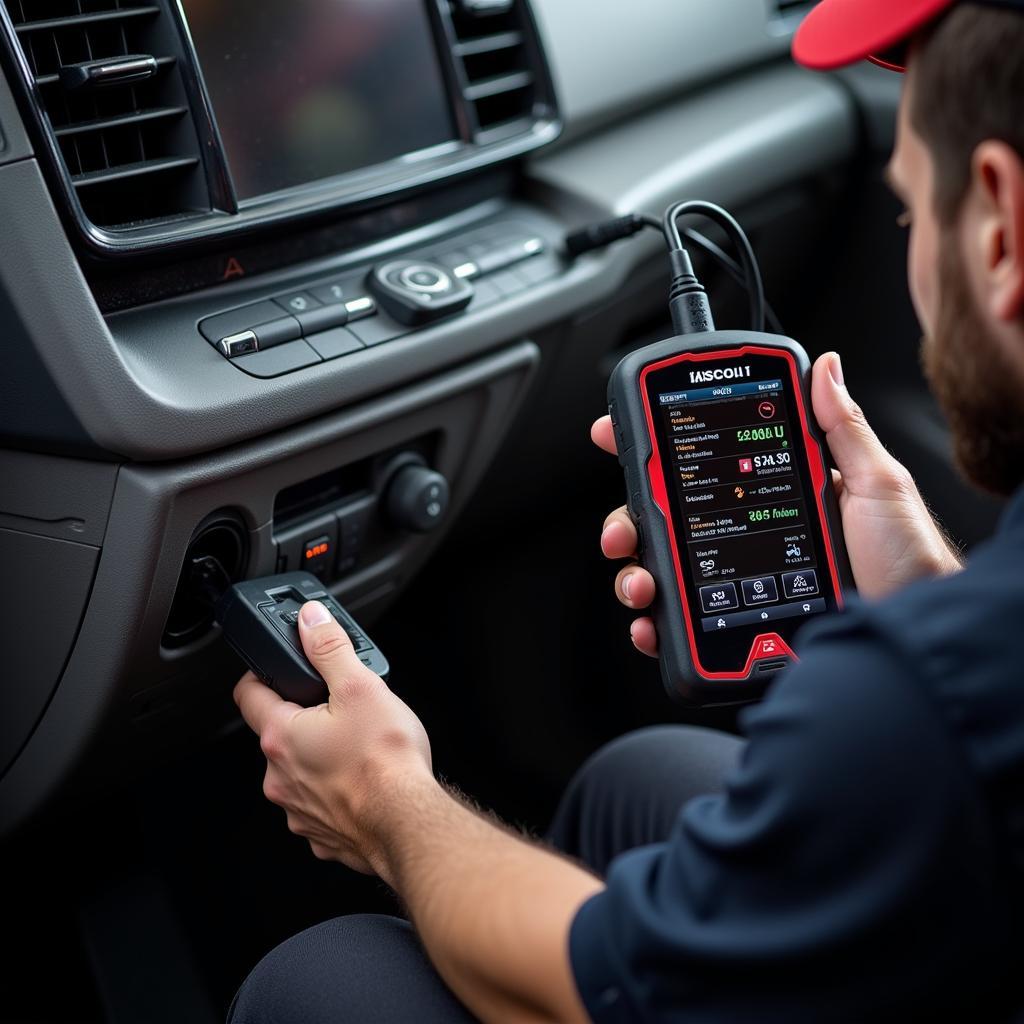Reading OBD2 codes without a scan tool might seem daunting, but it’s entirely possible and can save you a trip to the mechanic. This article will guide you through several methods to retrieve those trouble codes and understand what they mean, empowering you to troubleshoot your vehicle’s issues effectively.
A blinking check engine light is often the first sign of car trouble. While a scan tool is the most convenient way to read these codes, there are alternative methods that don’t require any specialized equipment. These techniques involve a bit of ingenuity, utilizing the car’s existing systems to decipher the codes. So, let’s explore how to read OBD2 codes without a scan tool.
Deciphering OBD2 Codes with the Paperclip Method
One of the most common methods involves using a simple paperclip. This technique works on many older vehicles (generally pre-2000) that use a simpler OBD1 system. It involves jumping two terminals on the diagnostic port, which then causes the check engine light to flash a sequence of codes. This method, while effective on older models, has limitations and doesn’t work on all vehicles.
How the Paperclip Trick Works: Step-by-Step
- Locate the OBD1 diagnostic port, usually under the dashboard or hood.
- Use a paperclip to connect the two designated terminals (consult your vehicle’s repair manual for the correct terminals).
- Turn the ignition to the “on” position, without starting the engine.
- Observe the check engine light. It will flash a series of long and short blinks. Long blinks represent tens, and short blinks represent ones. For example, two long blinks followed by three short blinks would indicate code 23.
- Record the sequence of flashes for each code.
- Refer to a reliable source for OBD1 code definitions specific to your vehicle’s make and model.
This process, though straightforward, can be challenging if you’re not familiar with your vehicle’s wiring. It’s always best to double-check your car’s service manual before attempting this method. This information is also similar to what you might find about an old car scanner.
Using the Car’s Built-in Systems to Retrieve Codes
Some vehicles have built-in systems that can display OBD2 codes without a scan tool. This typically involves a sequence of key turns or button presses within the car. For instance, some GM models allow you to read codes by cycling the ignition key from off to on three times consecutively. Other manufacturers might have a dedicated display within the instrument cluster that can show diagnostic information.
Finding Your Vehicle’s Specific Instructions
To find the correct procedure for your specific vehicle, refer to your owner’s manual or search online forums. Remember, this method isn’t universal and might not work for all makes and models. This reminds me of some best car code scanner 2018 models that had similar functionalities.
Counting the Blinks of the Check Engine Light (for some OBD2 Vehicles)
On some OBD2-equipped vehicles (primarily those manufactured before 2000), you might be able to retrieve codes by simply counting the flashes of the check engine light after inducing a diagnostic mode. This method is similar to the paperclip trick but often doesn’t require any physical manipulation of the diagnostic port. It typically involves a specific key-on, key-off sequence.
Inducing the Diagnostic Mode
Consult your vehicle’s service manual for the exact procedure, as it varies between manufacturers. Once in diagnostic mode, the check engine light will flash a series of codes, similar to the paperclip method. For additional insights, you can explore resources on best obd2 scan tool 2017.
Understanding the Retrieved Codes
Once you have retrieved the codes, understanding their meaning is the next crucial step. OBD2 codes are standardized, meaning the same code represents the same issue across different vehicle makes and models. However, the specific underlying causes for a given code can vary. You can find extensive resources online and in repair manuals that provide detailed explanations of OBD2 codes.
What if These Methods Don’t Work?
While these methods can be effective, they aren’t foolproof. If none of these methods work for your vehicle, or if you’re uncomfortable working with your car’s electrical system, it’s best to invest in an obd scanner scan tool or consult a qualified mechanic. Remember, accurate diagnosis is key to effective repair. More specifically, the b20 mini obdii bluetooth 2.0 car diagnostic scanner tool is a popular choice among car owners.
Conclusion: Empowering Yourself with OBD2 Knowledge
Understanding how to read OBD2 codes without a scan tool can be a valuable skill for any car owner. While a scan tool offers convenience and more detailed information, these alternative methods can be helpful in a pinch. Remember to always consult reliable resources for accurate code definitions and proceed with caution when working with your vehicle’s electrical system. If you need further assistance or have questions, feel free to reach out to us at ScanToolUS at +1 (641) 206-8880. Our office is located at 1615 S Laramie Ave, Cicero, IL 60804, USA. We’re here to help you keep your car running smoothly.

